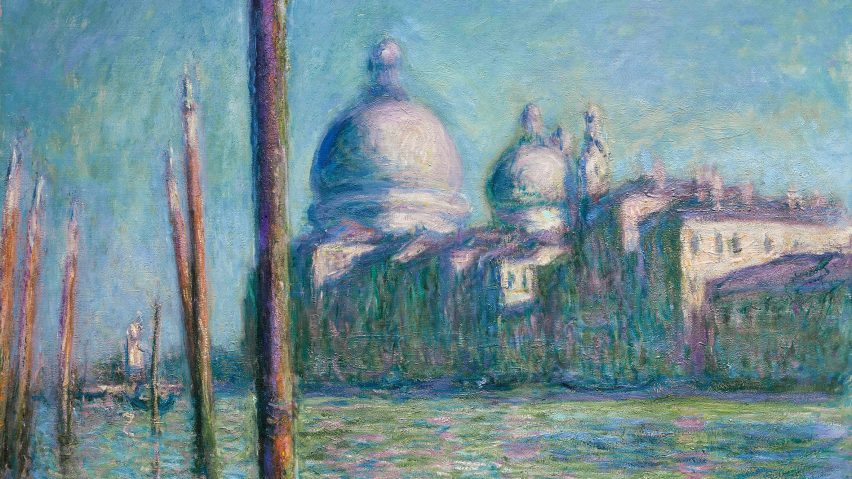
Monet and Architecture exhibition curator picks five must-see paintings
An exhibition at London's National Gallery brings together 78 paintings by French impressionist artist Claude Monet that explore works of architecture. Curator Rosalind McKever selects her highlights.
While Monet is most famous for his depictions of the natural world, particularly his Water Lily series, The Credit Suisse Exhibition: Monet & Architecture turns its attention to the artist's representation of architecture.
In an interview with Dezeen, McKever described the concept of focusing on works where Monet focused on the built environment as "a really counterintuitive idea" – but one that proved illuminating in how it revealed the way the artist worked.
Rather than arranged chronologically, the paintings are hung according to subject matter, so the buildings and locations Monet returned to over his career can be seen together.
"The two things I've really learnt from working in this way is thinking about how much he is playing with space and playing with what we are seeing," said McKever.
"By putting together two very similar works the differences between them emphasise how he may actually be not, as you would expect, documenting the scene before him, but actually creating a composition out of the forms that he sees," she added.
"The other thing that comes through very strongly is his ability as a draughtsman. In terms of an artist who we may think of painting very freely, he can actually paint a straight line – very freely – as well as the kinds of squiggles that you get with the Water Lilies. He can paint, for example, a bridge with incredibly clarity and spacial understanding."
The paintings are divided into three sections to better explore how Monet engaged with architecture throughout his life: The Village and The Picturesque, The City and The Modern and The Monument and The Mysterious.
The exhibition draws on works from both public and private collections. In some instances this is the first time certain paintings in a series have been together since they were in the artist's studio.
Only five of the total paintings in the blockbuster summer exhibition, which was the brainchild of leading Monet scholar, professor Richard Thompson from the University of Edinburgh, are from the National Gallery's collection. The rest are on loan from museums, galleries and private collections from around the world.
Here, with what she describes as great difficulty, McKever picks her five favourite paintings (or, in one case, series of paintings) and describes how they highlight the architecture of 19th-century Europe:
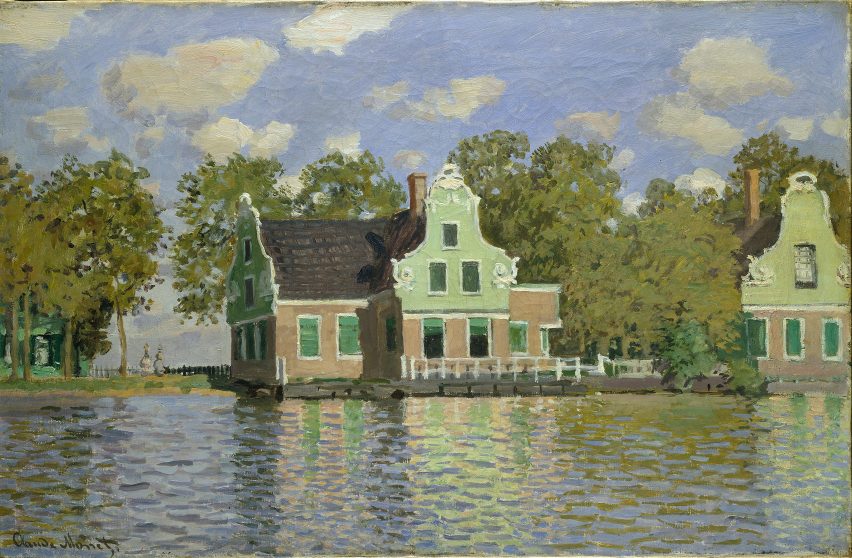
Windmills near Zaandam, Claude Monet, 1871, from Van Gogh Museum, Amsterdam
"This one I thought is interesting because people are not as familiar with the work Monet made in the Netherlands," said McKever. Windmills near Zandaam is from the first part of the exhibition, The Village and The Picturesque.
Travelling back from London, where he had taken refuge during the Franco-Prussian War, in 1871 Monet visited the Zaandam in the Netherlands. Trained in the aesthetic ideal of the Picturesque, the artist sought out views pleasing to the eye.
Two big themes that became apparent in Monet's work throughout his career are complimentary colours and reflections in water. This painting, where the reflection of the pink and green house is given almost as much space on the canvas as the structure itself, is an early example of this.
"If you look at the bottom half you can see how the colours from the top half a reflected in the bottom, so the reflection of the house becomes this very complicated mix of blues and then mint greens and peaches,' explained McKever.
"This is an interesting moment in his career because this is before the first Impressionist exhibition, but we can certainly see in this work the beginnings of the style that would come to be known as Impressionism."
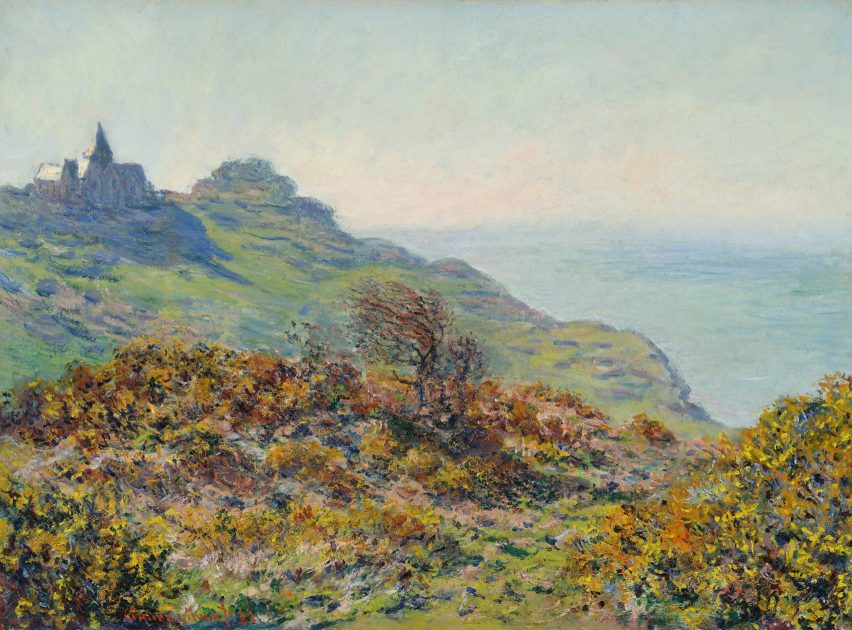
The Church at Varengeville and the Gorge of Moutiers, 1882
Here Monet is back on the coast of Normandy where he was raised, painting a church that sits where the land sheers away into the sea, and the built environment gives way to nature.
"He is fundamentally a painter of nature, but in order to best show nature he is showing it using the contrast of the built environment," said McKever.
"You have this church that's perched on the top of the cliff, which gives it a sense of scale," she added. "You get a sense of how big that would be and therefore how big the cliff below it would be. That sense of awe at nature really requires that."
Architecture in the landscape provides a contrast that allows Monet to display his command of his medium and the Impressionist style.
"When he's using buildings in these coastal environments, with the church you have a very square, structured buildings with loads of straight lines, as opposed to the cliffs below, which are far more ragged," said McKever. "You have this real juxtaposition that emphasises both the structure of the building and the ruggedness of the cliff."
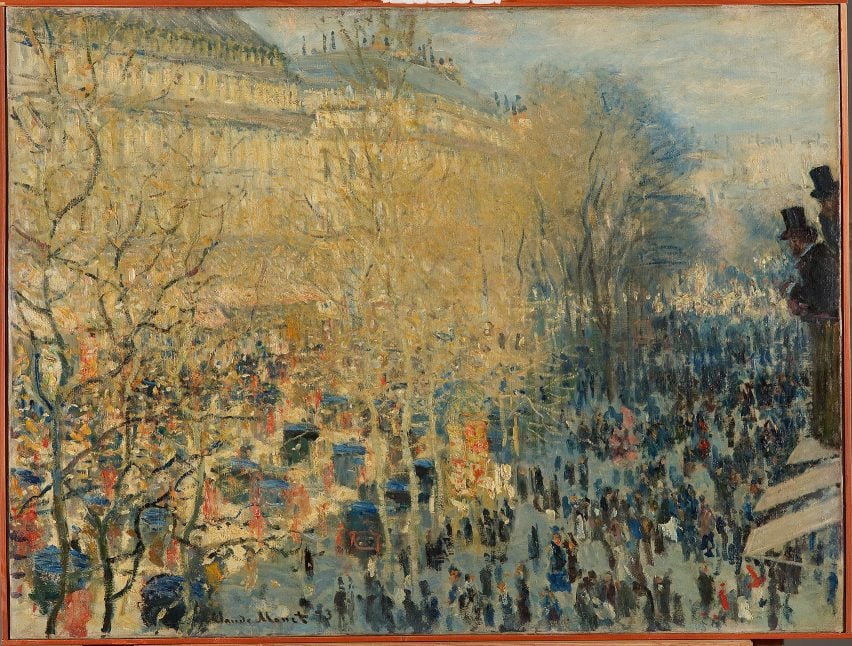
The Boulevard des Capucines, Paris, 1873
This painting, displayed in The City and The Modern part of the exhibition, depicts a street in Paris in 1873.
"This is an important moment in Paris' development as a city, in the period following Haussmannisation," said McKever. "It's architecturally new."
"This Boulevard de Capucines is not only a good example of Hausmannian architecture but of Monet as an Impressionist painter."
The canvas was in fact painted just one year before the first exhibition of Impressionist art in Paris, in the very room – belonging to the French photographer Nadar – where the display would be held.
"What's interesting about this painting is there's a really strong diagonal where you get the shadow of the building that cuts all the way across the canvas, and in the golden section of the composition where the sun is strongest – and Monet is fundamentally a painter of light – the picture almost dissolves," said McKever.
"You can't really tell the difference between the trees and the architecture of the street because everything has come together."
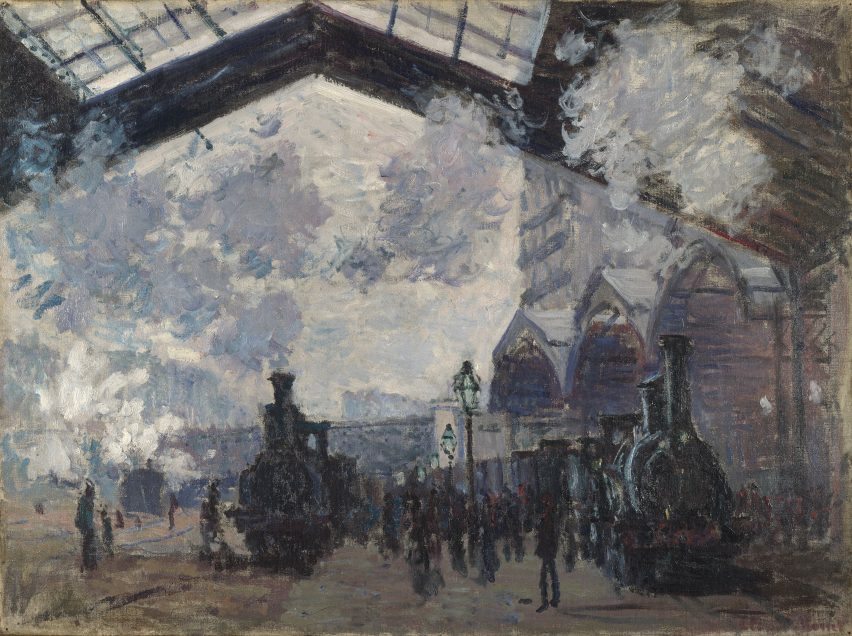
The Saint-Lazare Railway Station, 1877
"Trains are very important for Monet. Many of the places he's going he's travelling to via train," explained McKever.
In total Monet painted La Gare Saint-Lazare 12 times, renting an apartment next door especially to paint the building. Built in 1837, an expanded during the 50s and 60s, it was a fairly modern building for the time.
"You can see very clearly in this painting the roof of the building, this iron and glass structure above, and the clarity of that," said McKever.
"If you think of Monet as a landscape painter you'd expect at the top of the canvas to find the sky, but instead you find this very dark structure, and instead of clouds you get these puffs of smoke and steam coming from the engines."
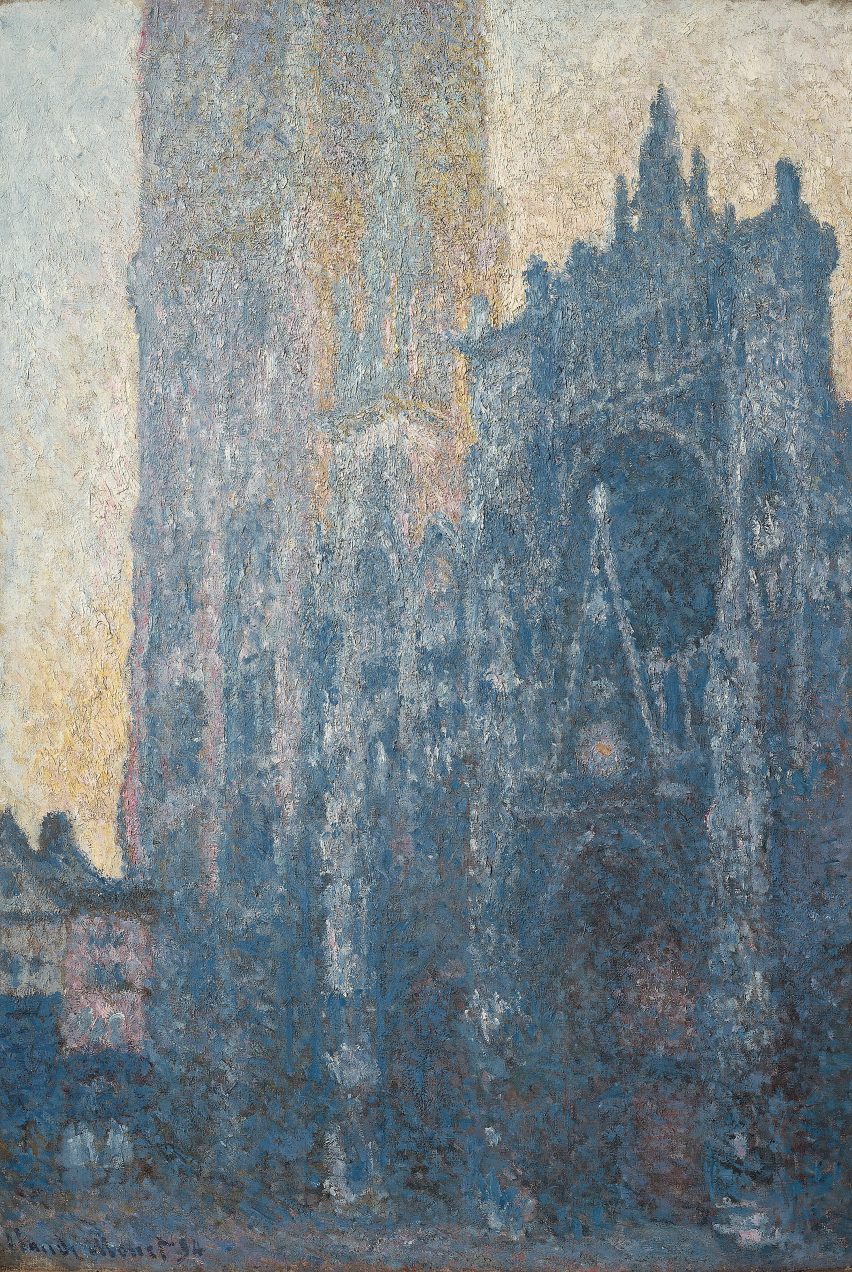
Rouen Cathedral: The Portal (Morning Effect), 1894
For the first time since Monet initially exhibited the series together, the National Gallery has bought together five of the paintings in his Rouen Cathedral series and hung them on one wall.
"This is one of the most exciting bits of the exhibition," said McKever. "This is when he starts trying to really capture not just one fleeting moment but a series of fleeting moments, by painting numerous canvases of the same thing."
Between 1892 and 1894 Monet challenged himself to paint the Cathedral in Normandy under many different light and weather conditions, renting apartments to gain different perspectives and even, in one case, the changing room of a ladies clothes shop.
"From his letters you can tell that it's a real effort for him," explained McKever. Monet set up multiple canvases in his makeshift studios, so that he could switch between them as the light shifted or the weather turned.
"What he's actively trying to do with Rouen Cathedral is paint architecture without any lines. He's trying to capture the effect of light on the facade of the building so that what you get is a cumulation of light effects rather than the straight lines of the building."
The Credit Suisse Exhibition: Monet & Architecture runs until 29 July 2018 at the National Gallery, London.